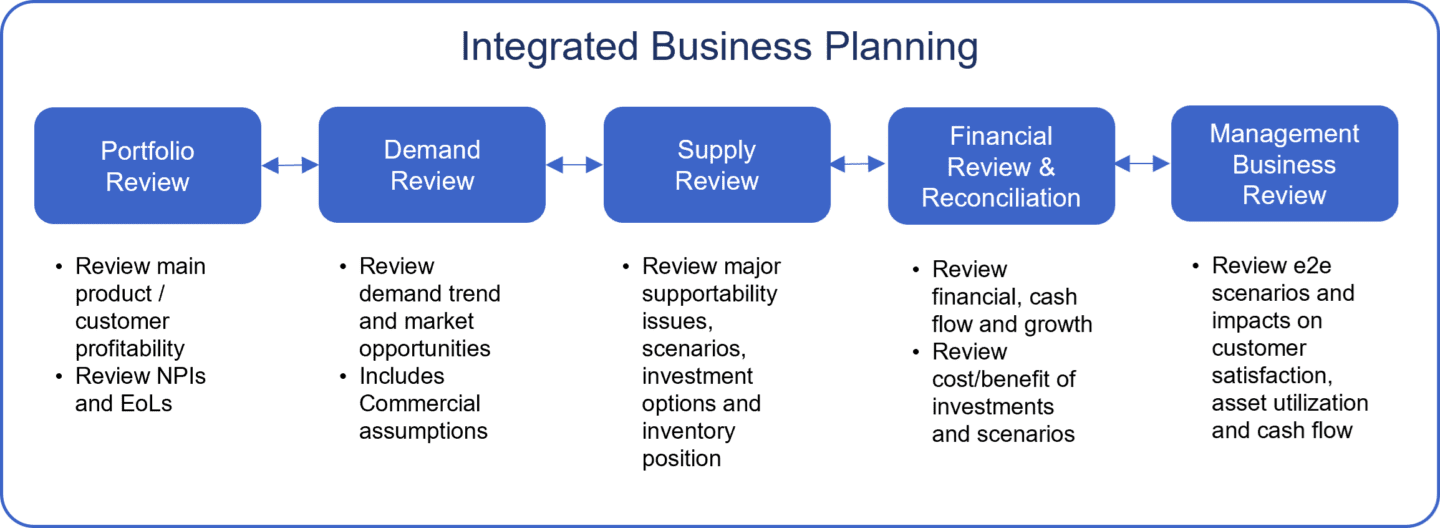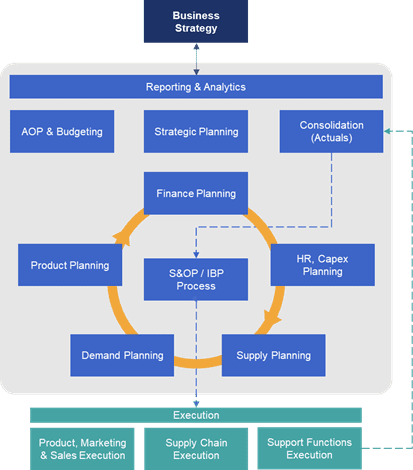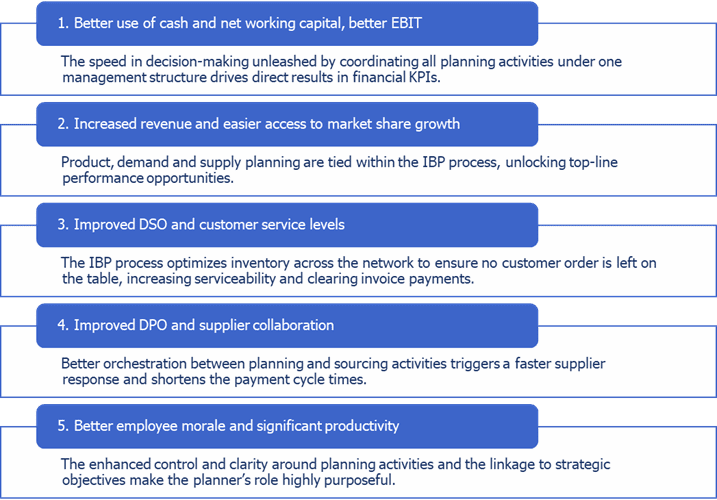If there is one thing any business analyst can forecast is this: sustained uncertainty. And organizations can’t do much to change this. What organizations can do though, is to prepare to deal with market variability by addressing the business challenges internal organizations may have: disconnected and lengthy planning processes, an insane amount of time collating data, siloed decision-making, lack of forecasting accuracy, poor sight into operational assumptions and what is driving margin. That’s what Integrated Business Planning is aiming for.
What is Integrated Business Planning (IBP)?
Integrated Business Planning aims to unify business strategy with planning, budgeting and forecasting activity for all business lines and functions – providing one version of the numbers. A trusted, common view of the numbers provides a robust baseline for agile decision-making and keeps all teams together, collectively trying to achieve the same corporate objectives while staying focused on specific KPIs. In other words, the different teams maintain their independence while working in unison to achieve corporate success by leveraging the same trusted and governed data.
The bottom line is that IBP is about aligning strategy intent, unifying planning processes and bringing the organization together.
IBP Process: How Does it Work
The Integrated Business Planning process is a framework to address the C-suite needs and help them implement the business strategy and manage uncertainty to improve decision-making. The secret sauce of IBP is a collaboration between the different teams under a single view of the numbers that must unequivocally be tied to financial performance, that’s how the C-suite gets value from it. Consequently, finance plays a central role within IBP.
IBP typically focuses on 24- 60 months horizons, as opposed to short term: that’s Integrated Tactical Planning or Sales and Operations Planning and Execution. The process must be fully integrated, so it should remove the departmental silos and it must adapt to the organizational construct of every business (it is not a one size fits all type of process).
Figure 1 outlines the five core elements of the IBP cycle with its responsibilities:

The most efficient way to foster this collaboration is by having a unified solution and data model that caters the needs of the various agents involved on each review. Figure 2 shows how one solution gathering all the capabilities in the greyed area under a unified data model is the most efficient approach to IBP.

IBP Business Benefits
The benefits an organization can expect from an IBP implementation are diverse. In the big picture, IBP can certainly improve financial and business performance. Figure 3 outlines some of the most remarkable KPI improvements.

Learn More
Want to learn how you can maximize the benefits of your IBP process and get your CEO onboard, read our blog on the 5 Considerations to Help Your CEO Trust the IBP Process.
This article first appeared on OneStream Software blog page by Jaime Marijuán Castro



